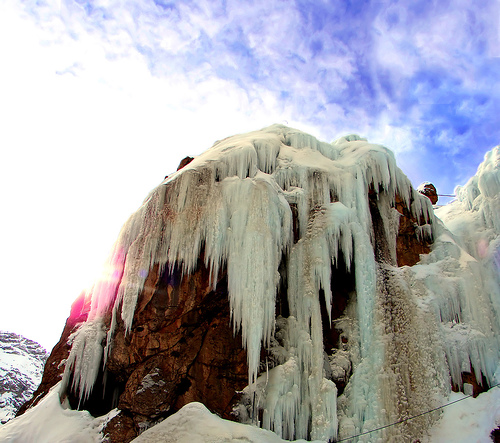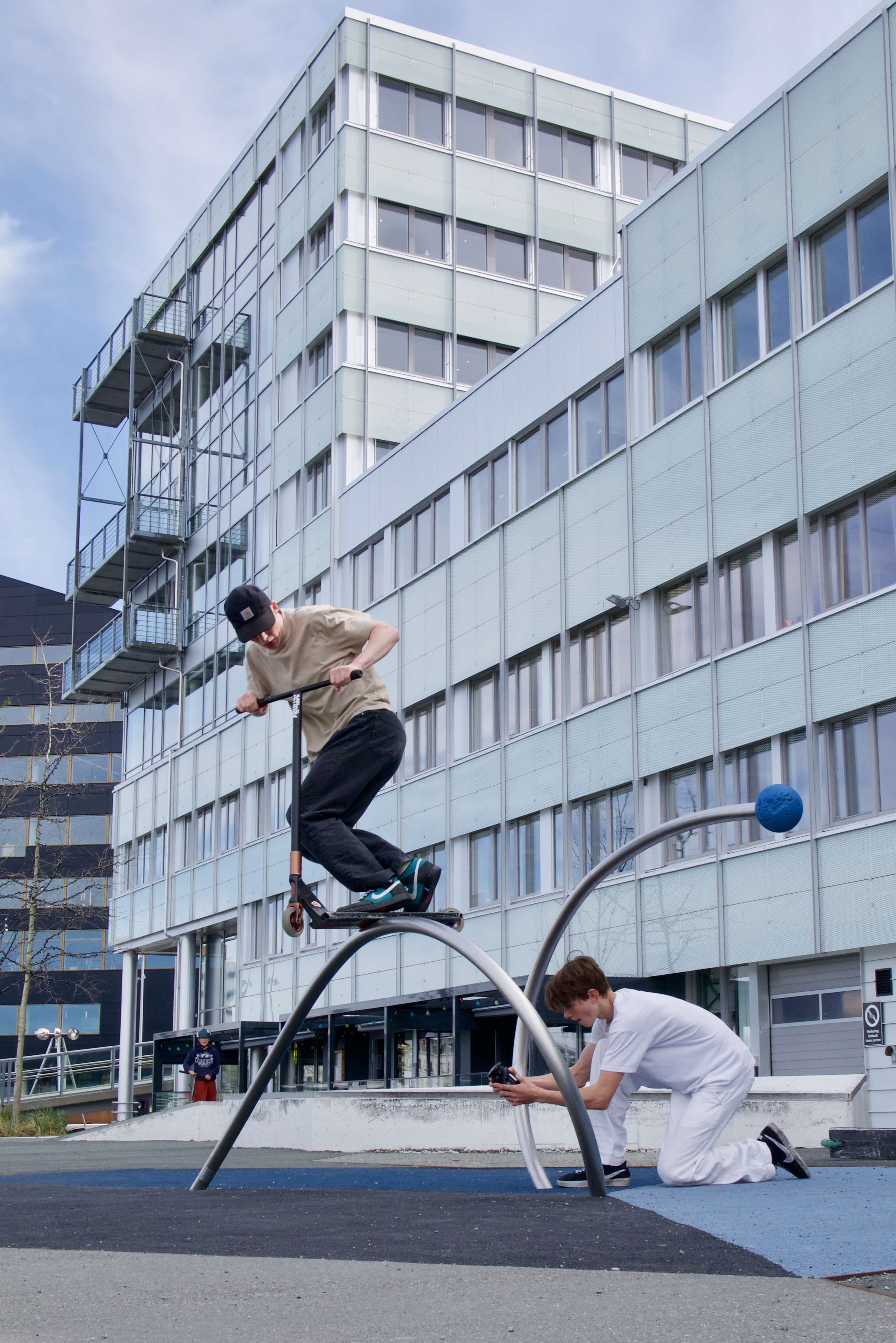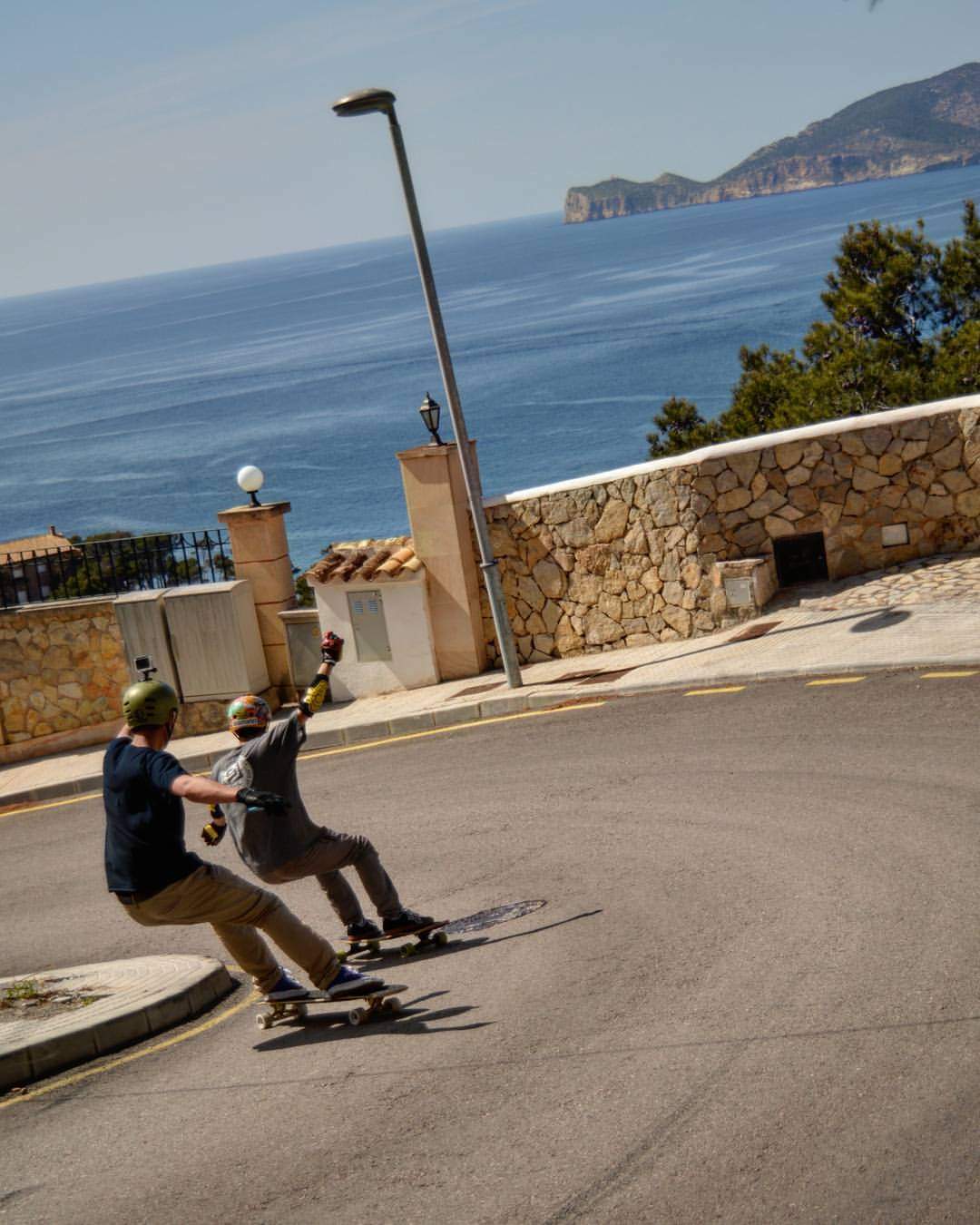|
Boardsports
Boardsports are active outdoor sports that are played with some sort of board as the primary equipment. These sports take place on a variety of terrain, from paved flat-ground and snow-covered hills to water and air. Most boardsports are considered action sports or extreme sports, and thus often appeal to youth. Some board sports were marginalized in the past. However, many board sports are gaining mainstream recognition, and with this recognition have enjoyed wider broadcast, sponsorship and inclusion in institutional sporting events, including the Olympic Games. Surfing is the first known boardsport, originating from Polynesian culture. Skateboarding was then invented by surfers looking to "surf" on land. It is hard to estimate when most boardsports were "invented" because people have been making homemade versions throughout history. For example, it is not hard to conceive of a person, who is familiar with the concept of skiing or sledding, standing sideways on a plank of wood an ... [...More Info...] [...Related Items...] OR: [Wikipedia] [Google] [Baidu] |
Carveboarding
Carveboarding is a boardsport on hard surfaces (roads, sidewalks, etc.). It is also known as surfskating when using a surfskate, which has smaller wheels. Carveboard is also the brand name of the board which popularized the practice of this sport, while Surfskate is also used as a brand name. The board was invented by Californian snowboarder & surfers (David Colley and Brad Gerlach) to practice their moves during flat sea days and summer. The result is a board that shares with the surfing, snowboarding, skateboard ride experience. And although by its anatomy (a board, 2 trucks, 4-wheel) the carveboard looks somewhat like its cousins skateboards, the handling and feel are ultimately much closer to those of surfing and snowboarding. Joe Gerlach, Brad's father, started Carve Board Sports based on the design. The practice reminds of, better known, longboarding. However, it emphasizes the work of the turn for which it provides all the variations of the carve. Some models are equipp ... [...More Info...] [...Related Items...] OR: [Wikipedia] [Google] [Baidu] |
Freeboard (skateboard)
A freeboard is a specialist skateboard designed to closely simulate the behavior of a snowboard. Freeboards were developed to allow snowboarders to transition to skateboarding (as non-winter transport) without the need to adapt to a smaller deck and narrower wheel-base. History Steen Strand conceived the idea for a freeboard as part of his master's thesis in product design at Stanford University, which he expanded into the freeboard style skateboard in 1996. After releasing an ''Alpha'' series featuring kicktails and longer decks (100 – 112 cm) than his more recent versions, Strand began retailing his freeboards under the brand name ''Freebord'' in the late 1990s. By the mid-2000s other freeboard styles and brands had emerged and were developing strong retail track records in mainstream sporting goods stores. Freebord brand After developing the freeboard in 1996, Strand released two models under the ''Freebord'' brand in 1998; the FB-112 and the FB-110. The compan ... [...More Info...] [...Related Items...] OR: [Wikipedia] [Google] [Baidu] |
Skimboarding
Skimboarding or skimming is a boardsport in which a skimboard (much like a surfboard but smaller and without fins) is used to glide across the water's surface to meet an incoming breaking wave, and ride it back to shore. Wave-riding skimboarders perform a variety of surface and air maneuvers, at various stages of their ride, out to, and back with, the wave. Some of these are known as "wraps", "big spins", "360 shove-its" and "180s". Unlike surfing, skimboarding begins on the beach by dropping the board onto the thin wash of previous waves. Skimboarders use their momentum to skim out to breaking waves, which they then catch back into shore in a manner similar to surfing. Another aspect of skimboarding is "flatland," which involves performing tricks derived from skateboarding such as ollies and shove-its on the wash of waves without catching shore breaks. Skimboarding originated in Southern California when Laguna Beach lifeguards wanted to surf the local shore breaks that were too f ... [...More Info...] [...Related Items...] OR: [Wikipedia] [Google] [Baidu] |
Extreme Sports
Action sports, adventure sports or extreme sports are activities perceived as involving a high degree of risk. These activities often involve speed, height, a high level of physical exertion and highly specialized gear. Extreme tourism overlaps with extreme sport. The two share the same main attraction, " adrenaline rush" caused by an element of risk, and differ mostly in the degree of engagement and professionalism. Definition The definition of extreme sports is not exact and the origin of the terms is unclear, but it gained popularity in the 1990s when it was picked up by marketing companies to promote the X Games and when the Extreme Sports Channel and Extreme International launched. More recently, the commonly used definition from research is "a competitive (comparison or self-evaluative) activity within which the participant is subjected to natural or unusual physical and mental challenges such as speed, height, depth or natural forces and where fast and accurate cogniti ... [...More Info...] [...Related Items...] OR: [Wikipedia] [Google] [Baidu] |
Skurfing
Skurfing is a towed water sport similar to waterskiing, in that an individual is pulled behind a boat on a tow rope. However, instead of water skis, the sport uses a skurfboard which is a floating platform the user balances on, similar to a surfboard, but typically much shorter, with two foot-straps that prevent falling off the board and three fins positioned on the bottom that make it easier to maneuver when the board is being towed. The word itself is a portmanteau of skiing and surfing. Skurfing is often considered the precursor to wakeboarding. History Skurfing was inspired by an unknown man being pulled by a boat on a surfboard in Lake Havasu, Arizona. The boat was being towed behind a motorboat at planing speed with a tow rope similar to that of knee boarding and wakeboarding. The planing speed of the motorboat was equivalent to the speed generated by a wave and allowed the skurfer to ride behind the boat the same way a surfer would ride a wave. One of the advantages ... [...More Info...] [...Related Items...] OR: [Wikipedia] [Google] [Baidu] |
Street Surfing
A caster board, vigorboard or waveboard is a two-wheeled, human-powered land vehicle. Other names are J-board and RipStik (sometimes written ripstick or rip stick), both of which are derived from commercial brands. A caster board has two narrow platforms known as "decks" that are joined by a torsion bar, which consists of a metal beam, usually coated by rubber, that houses a strong spring. One polyurethane wheel is mounted to each deck with a caster so that each wheel can steer independently, and each caster has a steering axis that is tilted about 30° back from the vertical. Movement The motion requires that the board be twisted back and forth so as to move either just the back foot or both the front and back feet side to side, essentially pushing the board forward at the outside of the movement, before the foot is brought back in the other direction. In principle, the act is similar to what is required to propel one who is riding inline skates forward, as opposed to how sk ... [...More Info...] [...Related Items...] OR: [Wikipedia] [Google] [Baidu] |
Freeline Skates
Freeskates consist of two separate metal or wooden plates with two wheels attached. People call it freeskating, freeline skating, or drift skating. History They were developed in 2003 in San Francisco by Ryan Farrelly. Farrelly founded a company called Freeline that has since gone out of business. Freeskating is practiced around the world. Gallery File:Freelines1.jpg, Detail of the Freeline skates. File:Freelines2.jpg, Side view of the Freeline Skates File:Freelineskatinginseoul.JPG, Freeskaters resting in Seoul. References External links twenty4actionFreeline Skate demoHow To Freeline Skate, on YouTubeThis is Freeskating - All Styles Roller skating Aggressive skating Roller skating equipment Skateboarding equipment {{Skating-stub ... [...More Info...] [...Related Items...] OR: [Wikipedia] [Google] [Baidu] |
Vigorboard
A caster board, vigorboard or waveboard is a two-wheeled, human-powered land vehicle. Other names are J-board and RipStik (sometimes written ripstick or rip stick), both of which are derived from commercial brands. A caster board has two narrow platforms known as "decks" that are joined by a torsion bar, which consists of a metal beam, usually coated by rubber, that houses a strong spring. One polyurethane wheel is mounted to each deck with a caster so that each wheel can steer independently, and each caster has a steering axis that is tilted about 30° back from the vertical. Movement The motion requires that the board be twisted back and forth so as to move either just the back foot or both the front and back feet side to side, essentially pushing the board forward at the outside of the movement, before the foot is brought back in the other direction. In principle, the act is similar to what is required to propel one who is riding inline skates forward, as opposed to how sk ... [...More Info...] [...Related Items...] OR: [Wikipedia] [Google] [Baidu] |
Caster Board
A caster board, vigorboard or waveboard is a two-wheeled, human-powered land vehicle. Other names are J-board and RipStik (sometimes written ripstick or rip stick), both of which are derived from commercial brands. A caster board has two narrow platforms known as "decks" that are joined by a torsion bar, which consists of a metal beam, usually coated by rubber, that houses a strong spring. One polyurethane wheel is mounted to each deck with a caster so that each wheel can steer independently, and each caster has a steering axis that is tilted about 30° back from the vertical. Movement The motion requires that the board be twisted back and forth so as to move either just the back foot or both the front and back feet side to side, essentially pushing the board forward at the outside of the movement, before the foot is brought back in the other direction. In principle, the act is similar to what is required to propel one who is riding inline skates forward, as opposed to how s ... [...More Info...] [...Related Items...] OR: [Wikipedia] [Google] [Baidu] |
Freestyle Scootering
Freestyle scootering (also known as scootering or scooter riding) is an extreme sport that involves using kick scooters to perform freestyle tricks. This is done mainly in skateparks but also in urban environments on obstacles such as stairs, hand rails and curbs. Freestyle scootering gained popularity following the ''Razor craze'' in the early 2000s after the invention of the foldable aluminium scooter by Micro Mobility Systems in 1999. Since then the construction of pro scooters have progressed immensely, making it a big business with many brands solely focusing on creating trick scooters world wide. Early years After the first version of the foldable kick scooter, invented by Swiss banker Wim Ouboter (founder of Micro-Mobility Switzerland), hit the market in 1999, scooters became extremely popular amongst kids worldwide. Micro was the first to produce and sell these scooters. Shortly after, Micro licensed their new invention to JD Sports who would go on to sell the scoo ... [...More Info...] [...Related Items...] OR: [Wikipedia] [Google] [Baidu] |
Snakeboard
A Snakeboard, also known as streetboard, or pivotboard is a board that was invented in South Africa in 1989 by James Fisher, Simon King and Oliver Macleod Smith. The concept was to fuse the original skateboard with elements of snowboarding and surfing to create a fun riding experience. The first prototype was constructed using two square wooden boards, an old roller skate chopped in half, and a piece of plumbing pipe to join them together. Many variants were tried before manufacturing began. The first boards to be mass-produced were made from a strong plastic nylon known as Zytel ST801. Performance The rider of a snakeboard stands with one foot on each footplate (the feet are usually fixed to the board using bindings) and, by moving their feet in and out in conjunction with the shoulders and hips, is able to propel the board in any direction using only body weight. This transfer of energy is called nonholonomic locomotion. The board moves in a motion similar to that of a snak ... [...More Info...] [...Related Items...] OR: [Wikipedia] [Google] [Baidu] |
Longboarding
Longboarding is typically defined as a variation of skateboarding that involves a larger board and softer urethane wheels. Longboards vary in shape and size. Compared to skateboards, longboards are more stable at speed and have more traction, due to larger wheel size and lower wheel durometers. A standard skateboard is typically between 28-34 inches long, whereas a longboard may exceed 50 inches. Many longboards use trucks that have different geometric parameters than skateboards. The skateboards use "traditional kingpin trucks" while longboards often use "reverse kingpin trucks." This hardware change is the key element in the increased stability that longboards offer. The term "longboarding" encapsulates multiple disciplines of riding. These include downhill, freeride, freestyle, dance and long-distance-push. Longboarding's disciplines vary significantly in terms of physical requirements, risk, and social demographic. While there are exceptions, there are distinct separate commun ... [...More Info...] [...Related Items...] OR: [Wikipedia] [Google] [Baidu] |





